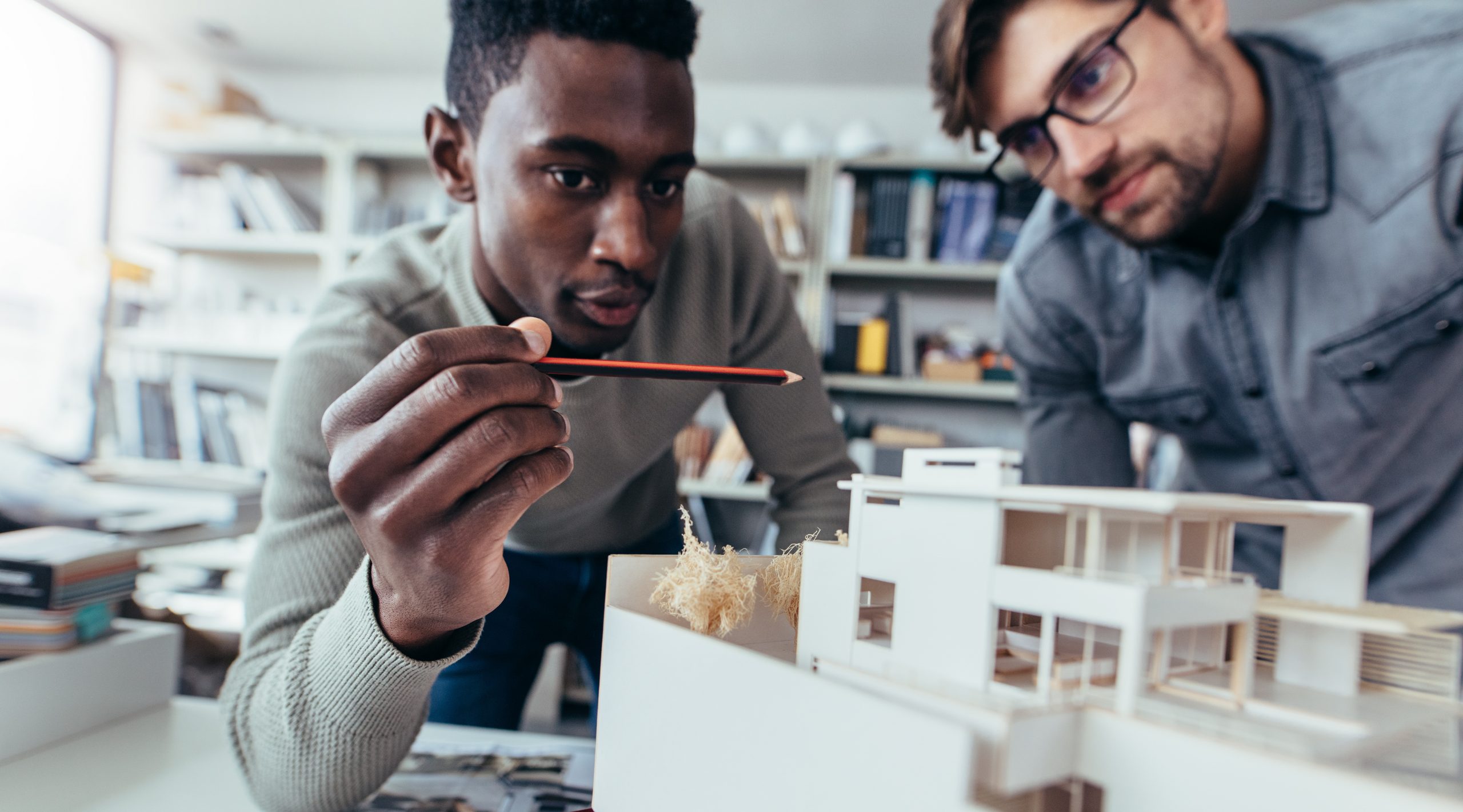Architect Tips for Planning Modern Residential Spaces
Architect Tips for Planning Modern Residential Spaces
Blog Article
Comprehending the Diverse Career Paths Available for Aspiring Architect
As a hopeful Architect, you have a globe of occupation courses waiting for you. Each path offers special obstacles and opportunities to apply your creative thinking and technological know-how. Whether you're attracted to conventional design or the nuances of sustainable layout, there's a particular niche that lines up with your rate of interests. Comprehending these varied options can shape your expert journey, but which instructions will you pick to check out initially?
Typical Design: Designing Frameworks and structures
Traditional design focuses on designing buildings and frameworks that blend performance with aesthetic allure. Your layouts can mirror social heritage, showcasing neighborhood practices while fulfilling contemporary needs.
You'll develop skills in drafting, model-making, and site analysis, permitting you to envision and interact your concepts successfully. Involving with clients, you'll need to recognize their vision and equate it into practical styles.
Furthermore, constructing codes and sustainability practices are necessary in your job, ensuring your frameworks are risk-free and ecologically pleasant. As you grow in your profession, you'll find possibilities in residential, industrial, or even remediation jobs, each offering one-of-a-kind difficulties. Accepting traditional architecture leads the means for a fulfilling career that admires the past while shaping the future.
Urban Planning: Forming Neighborhoods and Public Spaces
As an ambitious Architect, you can play a necessary function as a metropolitan planner, transforming how communities connect and work. By utilizing neighborhood engagement strategies, you'll guarantee that citizens have a voice in shaping their environment. And also, incorporating lasting style concepts will certainly help produce spaces that not just meet today's needs yet likewise shield the future.
Function of Urban Planners
While several might think about designers as the single enthusiasts behind buildings, metropolitan coordinators play an important duty fit the wider landscape of communities and public rooms. They evaluate land usage, zoning laws, and neighborhood needs to develop lasting settings that enhance lifestyle. By collaborating with various stakeholders, you'll aid make parks, transportation systems, and residential areas that advertise social interaction and access. Urban organizers likewise focus on environmental factors to consider, making sure that growths incorporate environment-friendly rooms and support biodiversity. Your knowledge in spatial layout and area dynamics allows you to envision future development while protecting cultural heritage. In this critical duty, you'll directly affect how individuals experience their environments, making every task an opportunity for favorable change.
Neighborhood Engagement Approaches
Reliable community interaction strategies are vital for urban organizers to assure that the voices of residents are heard and valued in the preparation process. To promote meaningful discussion, you must focus on open forums and workshops where community participants can express their concepts and worries. By actively paying attention and including comments, you'll produce rooms that show the neighborhood's requirements, inevitably leading to even more lasting and effective urban environments.
Sustainable Design Principles
When designing metropolitan areas, incorporating sustainable style concepts is critical for developing atmospheres that flourish both ecologically and socially. You should begin by concentrating on energy performance, making use of materials that reduce waste and promote recycling. Consider incorporating environment-friendly rooms, like yards and parks, to improve biodiversity and boost air high quality. Promoting walkability and public transportation can lessen reliance on cars and trucks, fostering a much healthier area.
Designing with water preservation in mind is additionally essential-- think about rain yards and permeable surfaces to manage stormwater. Entailing community members during the preparation procedure assurances that the rooms you create satisfy their needs and encourage social interaction. By embracing these principles, you'll add to lively, lasting city landscapes that benefit everybody.

Landscape Style: Creating Lasting Outdoor Settings
As you explore landscape design, you'll uncover important style principles that produce gorgeous and functional exterior areas. Lasting techniques play an important function in making sure these settings grow while lessening environmental influence. Plus, you'll locate a range of profession possibilities that enable you to make a genuine difference in exactly how individuals engage with nature.
Layout Principles in Landscape
Understanding style concepts in landscape design is crucial for producing sustainable exterior environments that integrate with nature. You'll need to ponder elements like equilibrium, scale, and percentage to assure your designs really feel cohesive and inviting. Integrating indigenous plants not only enhances biodiversity however additionally decreases water usage, making your landscape resistant. Think of the circulation of room and how people engage with it; paths and seating locations ought to invite expedition and leisure. In addition, take notice of seasonal modifications, making with products that enhance the surroundings year-round (Architect). By prioritizing sustainability and aesthetics, you can produce outside areas that improve the area and advertise well-being. Accepting these principles will set a strong structure for your profession in landscape design.
Sustainable Practices Summary
Lasting practices in landscape design not just focus on aesthetics however likewise focus on ecological health and wellness and source preservation. You can design spaces that promote dirt wellness, such as exercising and using organic materials permaculture principles. Inevitably, these techniques guarantee your styles benefit both people and the atmosphere for years to come.
Job Opportunities Exploration
With a solid structure in sustainable techniques, landscape style provides a variety of job paths that allow you to make a purposeful influence on the atmosphere. Urban planners usually work together with landscape designers to create environment-friendly areas in urban setups, enhancing city livability. If you're enthusiastic regarding education, think about becoming a landscape style educator, motivating future generations.
Sustainable Layout: Focusing on Eco-Friendly Practices
As you discover your profession in style, accepting eco-friendly methods can establish you apart in a competitive area. Lasting layout concentrates on producing structures that reduce ecological influence while improving occupant wellness. By including renewable materials, energy-efficient systems, and lasting building strategies, you'll contribute to a greener future.
Start by getting knowledge of environment-friendly accreditations like LEED or BREEAM, which can bolster your credentials. Think about exactly how all-natural light, ventilation, and thermal effectiveness can maximize design. Collaborate with engineers and environmental professionals to innovate services that minimize waste and preserve sources.
Do not fail to remember the relevance of area involvement-- engaging local stakeholders can inspire styles that integrate with the setting. As customers increasingly prioritize sustainability, your competence in eco-friendly practices will not just bring in tasks however likewise satisfy your enthusiasm for accountable design. Embrace this vital facet of the career, and enjoy your occupation grow.
Historic Preservation: Securing and Bring Back Social Heritage
While you start on your building trip, take into consideration the crucial duty of historical preservation in maintaining our social heritage. This field focuses on the defense and repair of considerable buildings, sites, and frameworks that tell the tales of our past. By participating in historic conservation, you'll help safeguard the building heritage that shapes community check out this site identity.
As a historical preservation Architect, you'll examine historical importance and assess the problem of structures. You'll function closely with chroniclers and guardians to guarantee authentic restoration methods are employed. This job path permits you to blend creative thinking with research, allowing you to create services that appreciate initial materials and workmanship.
Your work not just contributes to sustainability by reusing existing structures but likewise fosters a feeling of satisfaction within communities. Accepting this course will assist you end up being a guardian of background, preserving the stories and aesthetic appeals that improve our lives.
Interior Design: Enhancing Indoor Spaces
Historical preservation and interior design both share a dedication to improving the constructed environment, but they concentrate on various facets. While historic preservation stresses keeping a framework's historical and cultural value, indoor style absolutely nos in on optimizing indoor spaces for performance and appearances.
As an aspiring Architect, you'll find that interior style permits you to mix imagination with technological abilities. You'll create rooms that not just look good but also promote comfort and effectiveness. This area includes comprehending exactly how light, color, and materials engage within a room, influencing state of mind and use.
You'll function on numerous tasks, from property homes to business workplaces, making sure that each atmosphere satisfies the needs of its residents. By prioritizing user experience, you can anchor transform insides right into motivating and practical spaces, making a significant effect on just how individuals connect with their environments. Accept the chance to enhance interior settings and form the method people function and live.
Industrial Design: Combining Functionality With Appearances
Commercial design plays a necessary role in developing products that perfectly blend looks with functionality, making certain that what you make use of day-to-day is not only aesthetically enticing however additionally practical. As a hopeful Architect, you might engage on your own in this area, concentrating on creating everything from furnishings to consumer electronic devices. Your work involves recognizing individual requirements, products, and manufacturing processes, allowing you to develop innovative services that enhance daily experiences.
In commercial layout, you'll often collaborate with engineers, marketing professionals, and suppliers, making sure that your styles are not only gorgeous but additionally viable. This profession path provides a dynamic setting where creative thinking fulfills functionality, making it a satisfying choice for architects interested in forming the products of tomorrow.
Frequently Asked Concerns
What Educational Credentials Do I Required to End Up Being an Architect?
To come to be an engineer, you'll require an expert degree in style, commonly a Bachelor's or Master's. Furthermore, you'll have to finish a teaching fellowship and pass the Architect Registration Exam to exercise legally.
Exist Qualification Demands for Different Building Profession Paths?
Yes, there're qualification requirements for different building paths. Architect. You'll require to pass examinations, full internships, and sometimes seek specialized training, depending upon your chosen focus, like landscape style, metropolitan layout, or historical preservation
What Software Skills Are Vital for Engineers Today?

Just How Can I Gain Practical Experience While Examining Architecture?
You can obtain functional experience by interning at architectural companies, participating in layout competitions, offering for neighborhood tasks, or working together with schoolmates on real-world projects. These possibilities enhance your abilities and develop beneficial connections in the sector.
What Job Opportunities Exist Outdoors Traditional Style Firms?
You can explore numerous job possibilities outside traditional design companies, like urban preparation, interior style, landscape style, construction administration, actual estate development, or also duties in sustainability consulting. Each offers distinct obstacles and incentives.
Whether you're drawn to conventional style or the nuances of sustainable style, there's a particular niche that aligns with your rate of interests.When creating city spaces, integrating lasting layout concepts is important for creating atmospheres that grow both ecologically and socially.As you explore landscape architecture, you'll discover vital style concepts that create gorgeous and practical exterior rooms.Understanding design principles in landscape architecture is important for creating sustainable outdoor environments that balance with nature.In industrial design, you'll typically team up with marketers, designers, and suppliers, guaranteeing that your designs are not just attractive yet likewise possible.
Report this page